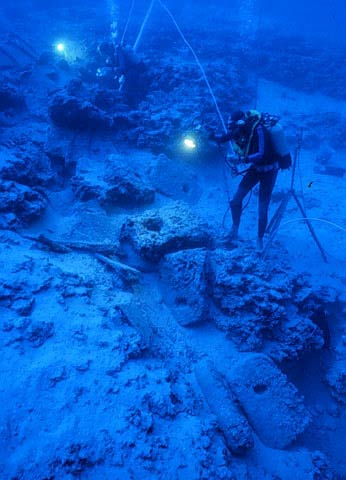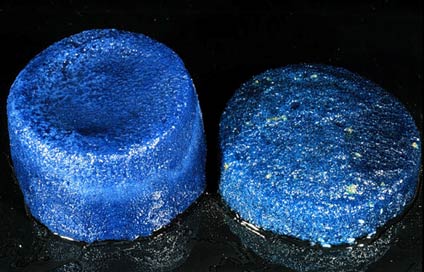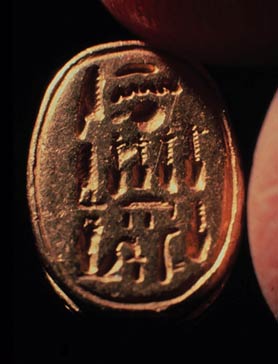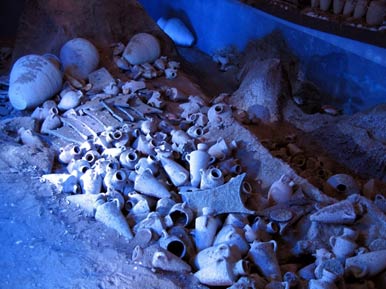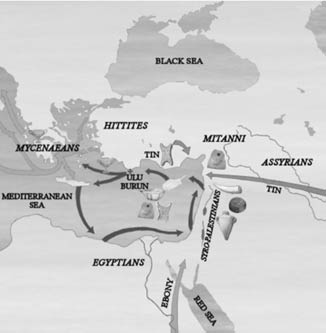Σε αυτή την εποχή των ηλεκτρονικών πληρωμών και συναλλαγές χωρίς μετρητά, μερικές φορές είναι εύκολο να ξεχνάμε ότι η αξία των χρημάτων μας είναι στην πραγματικότητα βασίζεται εν μέρει σε μια πολύ πραγματική ουσία - χρυσό. Από το 1900 έως το 1971, όλα Ηνωμένες Πολιτείες νόμισμα που λειτουργεί κάτω από το χρυσό πρότυπο. Θεωρητικά, κάθε δολάριο χαρτί τυπωμένο από το Νομισματοκοπείο των ΗΠΑ υποστηρίχθηκε από ένα ισοδύναμο ποσό της κυβέρνησης χρυσού. Σύμφωνα με τον κανόνα του χρυσού, ο καθένας θα μπορούσε να περπατήσει επάνω σε ένα γραφείο τράπεζα νόμισμα και δολάρια χαρτί αντάλλαγμα για το επιτόκιο της αγοράς αξίας του χρυσού. Για σχεδόν 80 χρόνια, ένα πολύ μεγάλο μέρος του χρυσού της Αμερικής έχει κρατηθεί ως αποθεματικό στην Bullion Αποθετήριο ΗΠΑ, ευρύτερα γνωστή ως Fort Knox . Και ακόμα κι αν σβήσει το χρυσό πρότυπο το 1971, η ιδέα ότι τα δισεκατομμύρια δολάρια την αξία των ράβδων χρυσού είναι απλά κάθεται στο Fort Knox σκονίζονται, είναι μια δελεαστική φαντασίωση για κάθε εγκληματικός εγκέφαλος. Αλλά ακριβώς πόσο χρυσό φυλάσσεται στο Φορτ Νοξ;

Πόσο Gold είναι στο Φορτ Νοξ;
Fort Knox βρίσκεται στο Fort Knox, Κεντάκι στη διασταύρωση της Gold Vault δρόμου και Bullion Boulevard. Χτίστηκε το 1936 για να στεγάσει τα τεράστια αποθέματα χρυσού που ήρθε περίπου λόγω της εντολής που εκδόθηκε από τον Πρόεδρο Ρούζβελτ το 1933 το Εκτελεστικό Διάταγμα 6102, απαιτείται όλα τα Αμερικανούς πολίτες να εγκαταλείψουν την ιδιοκτησία των ιδιωτικών αποθεμάτων χρυσού, συμπεριλαμβανομένων των νομισμάτων, τα πιστοποιητικά και πολύτιμων μετάλλων. Η διάταξη που ουσιαστικά είναι παράνομο να κατέχει τα αντικείμενα αυτά σε ιδιώτες.Εκείνη την εποχή, η κυβέρνηση των ΗΠΑ είχε $ 4 δισεκατομμύρια αξίας του χρυσού. Με το χρόνο ο καθένας είχε συμμορφωθεί με τη νέα τάξη πραγμάτων, το ποσό αυτό είχε διογκωθεί σε12.000.000.000 δολαρίων . Με καμία θέση για να βάλει όλες του χρυσού, η ομοσπονδιακή κυβέρνηση αποφάσισε να αναλάβει ένα τμήμα της γης που προορίζεται για τη στρατιωτική, και να οικοδομήσουν ένα τεράστιο θησαυροφυλάκιο. Κόστος κατασκευής μόλις κάτω από $ 600.000 (περίπου 10.000.000 δολάρια σε σημερινά δολάρια) και ολοκληρώθηκε το Δεκέμβριο του 1936 Το χρυσό άρχισαν να φτάνουν τον Ιανουάριο του 1937.

Gold Bars σε μια Vault

Το κύριο θόλο, η οποία κατέχει το χρυσό, καθώς και στοιχεία που κρίνονται σημαντικές για την εθνική ασφάλεια ή την ιστορία των ΗΠΑ, μπορεί να έχει πρόσβαση μόνο μέσω ενός 20-ton, 21-ίντσα παχιά πόρτα που είναι φακό και τρυπάνι-ανθεκτικά. Οι κωδικοί εισόδου είναι γνωστό μόνο σε έναν μικρό αριθμό εργαζομένων και δεν επιτρέπονται επισκέπτες στο κτίριο. Μέσα στο θόλο, υπάρχουν πολλά μικρότερα θησαυροφυλάκια, που καθεμία απαιτεί τη δική τους κωδικούς εισόδου τους. Μια ειδική αστυνομική δύναμη, γνωστή ως Ηνωμένες Πολιτείες Αστυνομία Νομισματοκοπείο, προστατεύει το σύνολο της ένωσης ανά πάσα στιγμή. Υπάρχουν, επίσης, εκτεταμένα συστήματα συναγερμού, κάμερες, μικρόφωνα, συρματοπλέγματα, νάρκες, ηλεκτρικούς φράκτες, πολλαπλές ελικόπτερα επίθεσης, και το πυροβολικό. Εάν ένας εργαζόμενος είναι κλειδωμένο σε, υπάρχει ένα τούνελ διαφυγής, αλλά λίγες πληροφορίες σχετικά με τη σήραγγα είναι διαθέσιμο στο κοινό.

Gold Bars στο Fort Knox
Η ποσότητα του χρυσού που πραγματοποιήθηκε στο Fort Knox έχει διακυμάνσεις κατά τη διάρκεια των ετών. Ήταν στο μέγιστο ποσό της κατά τη διάρκεια του Β 'Παγκοσμίου Πολέμου, όταν αρκετές ευρωπαϊκές κυβερνήσεις μετακόμισε αποθέματα χρυσού τους στο Κεντάκι για ασφαλή φύλαξη. Αυτή τη στιγμή, το ποσό του χρυσού στο Fort Knox κορυφώθηκε σε 20.205 μετρικούς τόνους (650 εκατομμύρια ουγκιά troy). Επίσης, κατά τη διάρκεια του 2ου Παγκοσμίου Πολέμου, τα πρωτότυπα αντίγραφα της Διακήρυξης της Ανεξαρτησίας και το Σύνταγμα των ΗΠΑ μεταφέρθηκαν στο Fort Knox, όπως ήταν οι ουγγρικές Crown Jewels και ένα αντίγραφο της Magna Carta.
Επί του παρόντος, το θησαυροφυλάκιο κατέχει 4.578 μετρικούς τόνους από 368.000 προτύπου, 400 ουγκιές troy ράβδους χρυσού. Αυτό είναι ίσο με το τρία τοις εκατό του συνόλου του χρυσού που έχει ποτέ βρεθεί και εξευγενισμένα στην ανθρώπινη ιστορία. Στο 10 Φεβ. 2014 τιμή 1276 δολάρια ανά ουγγιά, Fort Knox κατέχει περίπου περίπου 180 δισεκατομμύρια δολάριααξίας του χρυσού. Ο θόλος διαθέτει επίσης μια σειρά από σπάνια χρυσά νομίσματα. Οι ράβδοι χρυσού είναι διαφορετικής καθαρότητας. Μερικά είναι περίπου το 90% του χρυσού, καθώς δημιουργήθηκαν από έλιωσε νομίσματα. Άλλοι είναι μέντα και είναι 99% χρυσό. Είναι ενδιαφέρον, Fort Knox είναι στην πραγματικότητα δεν είναι το μεγαλύτερο χρυσό θεματοφύλακα στις Ηνωμένες Πολιτείες. Η Federal Reserve Bank της Νέας Υόρκης λειτουργεί ένα υπόγειο θησαυροφυλάκιο που περιέχει 7.000 μετρικούς τόνους χρυσού, μερικά από τα οποία ανήκει σε άλλα έθνη και κρατείται στην εμπιστοσύνη. Όποιος έχει δει Die Hard με μια εκδίκηση θα θυμούνται ότι οι κακοί προσπαθούσαν να κλέψουν το χρυσό από την Ομοσπονδιακή Τράπεζα των ΗΠΑ στη Νέα Υόρκη, χρησιμοποιώντας τεράστια φορτηγά και κατασκευή σηράγγων κάτω από την πόλη. Μεταξύ Fort Knox και το χρυσό που κατέχει στην Federal Reserve Bank στο Μανχάταν, υπάρχει περισσότερο χρυσό πραγματοποιήθηκε σε αμερικανικό έδαφος από ό, τι οποιαδήποτε άλλη χώρα στον κόσμο. Αλλά για όλα εσύ σούπερ εγκληματίες διαβάζετε αυτό, το μάθημα εδώ θα μπορούσε να ξεχνάμε Fort Knox και να επικεντρωθεί στην Fed στο Μανχάταν. δύο φορές τα κέρδη!
The United States has a large portion of its gold reserves stored in the vault at Fort Knox Bullion Depository, a fortified vault building adjacent to Fort Knox, Kentucky with the remainder split between the Philadelphia, Denver, West Point, and San Francisco Mints. Gold is not removed except for regularly scheduled audits. Domestic production of gold in the United States has been about 1 to 1.5 million ounces annually. This brings the cumulative total of US gold production to 363,000,000 troy ounces since 1792. A troy gold bar weighs 27.4 lbs or 12 kg.
In 1933, Pres. Roosevelt outlawed the private ownership of gold coins, de Leon and certificates by American citizens, forcing them to sell to the Federal Reserve. The Fort Knox gold vault was completed in 1936, at a cost of $1 million or the equivalent of $10 million today.

Building Fort Knox Gold Depository
Fort Knox was built using 17,000 ft.³ of granite, 4,500 yd.³ of concrete, 775 tons of reinforcing steel and 700 tons of structural steel.
The facility is surrounded by fences and guarded by the United States Mint Police. Fort Knox is a US Army post of 30,000 soldiers and surrounds the depository and provides an extra level of security to the facility. The vault door and emergency door are both 21 inches thick and made of the latest torch and drill resistant metals.
In addition to the many layers of physical security. There are alarms, video cameras, minefields, barbed razor wire, electric fences, closed circuit cameras, heavily armed guards and army units. There are also Apache helicopter gunships on-site and at nearby Godman Army Airfield. Visitors are not allowed at the facility.
About 3.5 to 4 million troy ounces per year are consumed in the United States for jewelry and industrial machines. The price of gold in 1934 was about $20 and rose to between $320 to $450 per troy ounce in 1980. The current price is more than $1,200 per ounce.
Fort Knox Has Protected More Than Gold
During World War II Fort Knox held the US Declaration of Independence and the U.S. Constitution as well as reserves of European countries and key documents from Western history. The crown of St. Stephen and some of the Hungarian crown jewels were also held at Fort Knox.















